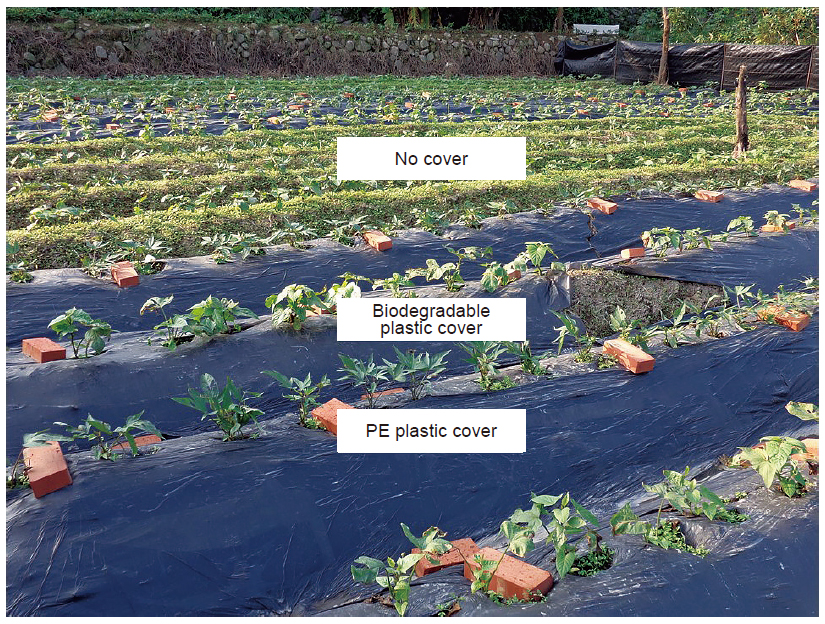All issues

Author:Shu-Fang Lo and Shou-Horng Huang*
Abstract:
Covering plastic on furrow surface has the advantages of easy operation, lower investment, and increasing the soil temperature, crop growth rate and yield. This trial was conducted in winter season in northern Taiwan to evaluate the production of seedlings of two sweet potato cultivars, ‘Tainung No.57’ and ‘Tainung No.66’, under different cover treatments. From December 2014 to February 2015, the daily mean air temperature was in the range of 11.1℃ to 21.1℃. Soil temperature at 8 cm depth was the highest under the covering of black polyethylene (PE) plastic treatment, and maximum temperature difference had reached 6℃ compared to air temperature. The agronomic traits of weight of maximum vine length (452.2 g and 272.3 g), number of the vine length longer than 30 cm (7.9 and 5.4) and tuber weight (225.4 g and 209.8 g) under the covering of black PE plastic treatment were higher than other treatments on sweet potato cultivars, ‘Tainung No.57’ and ‘Tainung No.66’, respectively. The survival rate of seedling was also higher than 90%. The density of insect pests was relatively low during December 2014 to March 2015, but increased gradually in April, particularly plum moth had reached 0.7 per sweet potato vine, followed by leaf beetle reaching 0.4 per sweet potato vine. The damage number of sweet potato tuber by sweet potato weevil was low (less than 1 tuber) under three treatments, suggesting that low density of sweet potato weevil suppressed significantly by the low temperature.
Key words:Mulching treatment, Sweet potato seedling, Insect pest
Download:![]() PDF Links
PDF Links
- 1. Development of Tractor-Mounted Seedling Transplanter for Sweet Potato
- 2. Synergistic Effect of Additional Gas on the Toxicity of Phosphine to Sitophilus oryzae and Sitophilus zeamais (Coleoptera: Dryophthoridae)
- 3. Effects of Temperature and Solar Radiation on Growth Traits and Plant Elements in Purple Leafy Sweet Potato
 Submit your manuscript
Submit your manuscript
 Guide for authors
Guide for authors